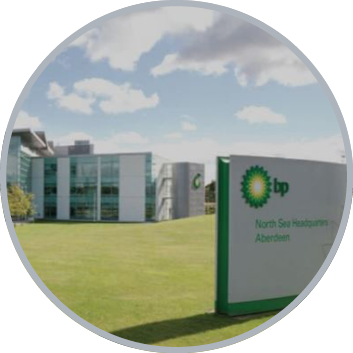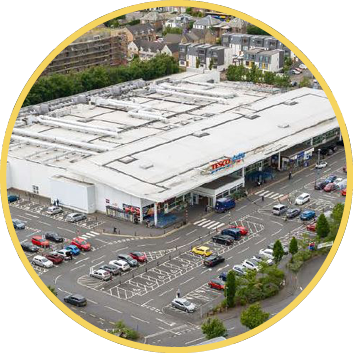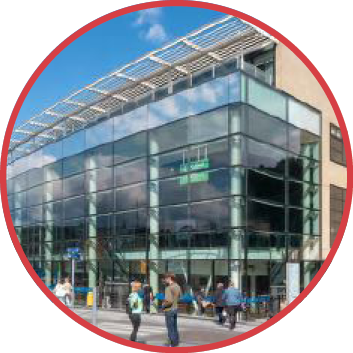
“It’s a new dawn, it’s a new day…
and I’m feelin’ good”
– Nina Simone
We all know that one swallow doesn’t make a summer however, as these birds begin to join us as the clocks change, will they be joining an improved UK commercial property market?
Sentiment has changed noticeably as we leave Q1 2024, albeit from a low base! The mood music is improving, inflation is at its lowest since September 2021, deal flow has increased almost a third compared to Q1 2023 and let’s not forget a “sunny” MIPM.
Pricing is stabilising, especially in the vogue sectors but opportunities still exist for the more adventurous. The engine is running, but we’re still in a “20” zone. Perhaps with a positive outcome at the next MPC meeting in May we’ll begin to move through the gears more freely and build on today’s cautious optimism.
With a sunnier backdrop, we are delighted to add a focus on “Glasgow City Centre Regeneration” to our regular quarterly analysis. Like most major UK cities, Glasgow has challenges but offers real opportunity going forward. Glasgow City Council’s 2024-2030 City Centre Plan sets out an ambitious vision for city centre regeneration. If the public and private sectors can align there could be some interesting times ahead.
Land Securities will have an exciting role to play in terms of the city’s regeneration and we are delighted to have input from Stuart Orr, Senior Development Manager who is our guest contributor this quarter.
Wishing everyone a happy Easter!
Market Overview.
Key Themes
Sheds still lead the way – in terms of depth of buyer pool and strongest pricing. The sector has weathered the storm well and with such a strong demand/lack of supply dynamic, genuine rental growth continues to underwrite the investment rationale.
Funds more prevalent – early signs of increased Fund activity but still focused on a limited number of key sectors, including re-based prime retail, retail warehousing, hotels and industrial.
Corporate M&A activity – leading to an increase in motivated sellers, as new owners shape their portfolios to align with their sector-specific, wider strategic goals.
Improving Aberdeen Liquidity – repeating its’ pattern of being a contra-cyclical play, the city has seen a significant uptick in office and industrial volumes as yield-hungry buyers see the current opportunity of double digit (+) yields in fundamentally good buildings, as compelling.
Roadside market vogue – specifically drive-thrus, remain very popular with private investors anticipating some of the strongest rental growth forecasts across all sectors.
Private equity – flexing its muscle at last. They have had to be patient, but a number of high-profile acquisitions have shown that they are seeing the time as now to find some real value, in anticipation of an improving confidence in the wider market.
Transaction Volumes
Q1 saw £431m traded up 33% on Q1 2023.
Q1 volumes were 16% above the 5 year average.
A positive start to the year with a number of notable transactions generating momentum heading into Q2, with some significant deals
being prepped.
Pricing
For the first time in some 2 years, there are genuine signs that we have reached the bottom of the cycle. While the market remains fickle and each sector has nuances affecting value, we are starting to see some clarity around pricing and, in the strongest sectors, even some upward pressure starting to come.
Logistics and multi-let sheds remain the strongest sectors in terms of depth of demand and we are anticipating that a number of live sales will show further stabilising of yields and, for the very best product, a slight hardening. The current prime range for NIY’s is 6.00-6.25% but we believe sub 6% will be achieved in the coming quarter.
While offices are not top of many investor target lists, there are signs of increased depth. If debt can be obtained at a sensible level, then hitting double-digit geared returns is comfortably achievable. The sector remains challenging, but more liquidity is coming in the sector.
Retail warehousing continues to offer good value. The demand/supply dynamic remains positive and with prime yields at 6.50-7.00% and 7.5%+ on good open parks, the case remains compelling. The High Street is interesting, and we are starting to see renewed appetite (including Funds) for prime blocks where rents have been properly re-based and yields at 6%+. Genuine rental growth is helping to achieve IRR returns and convince Investment Committees to support.
The Living sector remains in vogue and while the development pipeline is stubbornly slow, investor appetite is strong. The weight of capital chasing the sector is helping to underpin values at c5.50% for PBSA and BTR (albeit the BTR development market remains in a state of flux, while the proposed legislation in rent controls plays out).
Buyer Activity
While we anticipate Funds still to be net sellers during 2024, for the first time in some 2 years, we are seeing acquisition activity. The focus remains on “sheds and beds” but other interesting sectors such as high street retail and retail warehousing is getting attention.
As debt availability has stabilised and a feeling that rates may start to improve later in the year, core-plus buyers with leverage are active. Yields of 7.0%+ is making debt accretive and returns more achievable. We see these buyers becoming more active during the next 6 months.
Private equity is now seeing the time as right. Recent acquisitions such as Union Square in Aberdeen by Lone Star is evidence that they can see “value”. As ever, the canny buyers will be in early and, with extremely deep pockets, this weight of capital is moving.
Key Recent Transactions.
Q4 saw some interesting themes and significant transactions which we have highlighted below:

Union Square, Aberdeen
“Private equity acquires dominant shopping centre”
Vendor: Hammerson
Purchaser: Lone Star
Let to: Multi-let
Price/Yield: £111m / 11%
Date: February 2024

BP, Aberdeen
“North Sea HQ trades following BP recommitment”
Vendor: British Coal Pension Fund
Purchaser: DS Properties
Let to: BP Exploration Operating Company Limited
Price/Yield: £16m / 16.17%
Date: March 2024

Tesco, Corstorphine
“Prime foodstore snapped up”
Vendor: Lothbury IM
Purchaser: ICG
Let to: Tesco Stores Limited
Price/Yield: £43.9m / 7.6%
Date: January 2024

Omni, Edinburgh
“Swiss family office acquire long income leisure asset”
Vendor: Nuveen
Purchaser: Overseas private family office
Let to: Multi-let
Price/Yield: £64m / 8.13%
Date: March 2024
The investor view on the year ahead:
Do you see investment opportunities in Glasgow over the next 12 months?
An overwhelming response in the affirmative of 89% – a vote of confidence for Glasgow!
Property companies and investment managers are most positive with over 90% forecasting a year of opportunity in Glasgow with funds being somewhat more tentative, with 40% responding ‘yes’.
A number of comments highlighted the attractive yield gap when comparing Glasgow to other key regional cities and strong fundamentals which tick the boxes in many sectors including an under supply of PBSA, a strong prime retail market and in the office sector, a low availability of Grade A space.
What is your favoured sector for investment in Glasgow over the next 12 months?
Perhaps unsurprisingly, the top two sectors are Living and Industrial. accounting for 32% each, reflecting the appetite nationally for these sectors on the back positive supply/demand dynamics and strong forecast rental growth.
The retail and office sectors were each selected by 18% of respondents, with the micro location being highlighted as fundamental to appetite for both sectors.
It was noted that prime High Street retail passing off rebased rents and offering genuine rental growth was attractive at a sensible level. Well located offices in close proximity to travel connections and amenity are gaining traction, with a couple of key city centre leasing campaigns leading to confidence that demand remains for best in class space in the city.
Is the public sector doing enough to support regeneration in Glasgow city centre generally?
Just 21% of respondents believe the public sector are adequately supporting regeneration of the city centre.
Positive large scale regeneration is reliant on the public and private sectors working in tandem to deliver meaningful change. Positively, there is certainly appetite from the public sector and the Glasgow City Region deal will deliver £1.1bn in public sector investment to deliver major infrastructure and regeneration projects over the coming years.
Scottish Government legislation regarding rent controls will make the strategy of Glasgow city council to encourage people back into the city centre to live, very difficult to deliver.
“Expert view” on regeneration in Glasgow City Centre…

Stuart Orr
Senior Development Manager
Land Securities
From your perspective, what are some of the key attributes of Glasgow as a city which make it attractive for redevelopment and investment?
Glasgow has really excellent bones. It has a catchment population of around half of Scotland’s total population, with the City Region including two of Scotland’s most prosperous local authority areas. It is one of the largest city region economies in the UK, and is the largest integrated economic region in Scotland, with around a third of Scotland’s output, business base, research power and employment. It has 6 universities and super colleges with an identifiable PBSA shortage of over 20,000 rooms. The retail market remains the strongest regional performer for consumer spend outside of London, and Buchanan Street has effectively zero vacancy and has witnessed 20% rent growth over the last 18 months. The office sector has low availability of Grade A space and a tightly constrained development pipeline, whilst offering one of the widest spreads between prime office yield and risk-free rate in Europe.
Glasgow has one of the highest degree-educated workforces in the UK and a graduate retention rate of over 50%, supported by a high standard of lifestyle set against relative affordable cost of housing.
I could go on…
Redevelopment projects have been challenging in Glasgow in recent years from a viability perspective, principally due to construction costs, valuations and financing. Do you see these aspects stabilising in the near-medium term, and this stimulating further activity?
This of course isn’t a Glasgow specific issue, its UK-wide, and it’s a moment in time. Looking at planning applications, it often feels like PBSA is the only sub-sector that remains viable in this market. Development viability has been hit hard by the trifecta of price of materials to deliver an appropriate ESG response, cost inflation and the cost of finance. The occupational market is lagging the cost market and the reality is that occupiers must pay an economic rent to support these additional ESG costs. However, I do see cost of funds slowly coming down, and I anticipate that with construction cost inflation easing and the number of projects reducing, contractors may become more competitive for new projects again. The main driver of course is that we really need a volume of letting transactions that supports these costs and ESG agenda, and a planning system that understands and supports the need for increased massing/ height to make all of this viable.
From an occupier perspective, what trends are you seeing, and how is this shaping your own strategy in relation to your Glasgow ownerships?
The occupational markets are showing signs of resilience and in many cases some pro-active signs of post-covid decision making, preparing for growth, although this remains cautious. In the retail market, Buchanan Street has zero vacancy and rents have rebounded 20% in the last 18 months and forecasted to grow further still. Demand for larger format stores remains strong against restricted supply, whilst there’s very little leisure or F&B offer on the street. There are the beginnings of ESG considerations showing in the retail market, whereas by contrast in the office sector this is the main consideration in every decision. Fundamentally, our belief is in curating mixed-use sustainable places where communities can connect.
How do you feel Glasgow is faring when compared to other key UK and European regional cities?
Like all cities, Glasgow has been knocked badly by covid, but it is widely acknowledged that it was impacted the hardest due to the longest lockdown coupled with a slower return to work than most of the Big 6 regional cities, so in that sense it’s coming from a disadvantaged position.
I guess there’s two ways of looking at this…there’s the high-level measures against which, on the face of it, Glasgow is being recognised for, such as the Resonance World’s Best Cities Report, which ranks Glasgow second in the UK, behind London.
But then there’s the perspective as a citizen, the day to day stuff, that feels like we’re perhaps not where we want to be, or should be… the need for a better integrated public transport infrastructure – one that connects to the airport, improvements to the hygiene issues in the city centre, improvements to the public realm, the ‘cold spot’ areas, etc. Like any city, there are challenges ahead, but it feels like we do have motivated stakeholders who are all engaged to make Glasgow realise its potential, it just takes time and money, and it’s the last bit that’s the difficult bit.
Where in the city do you see “hot spots” for regeneration in the coming 5-10 years?
For single use development, hot spot areas will evolve where viability is greatest, areas where land value is reduced and you can get consent for height, such as Tradeston, Lancefield Quay and Cowcaddens. For mixed-use development, the best areas are those benefitting from the confluence of business, leisure and living, close to major transport infrastructure hubs. To my mind, there are two areas within the city centre that meets this criteria, and we are very fortunate to own one of them.
“Our view” on regeneration in Glasgow City Centre…

Simon Cusiter
Senior Development Manager
Land Securities
Glasgow is Scotland’s largest city and accounts for a third of Scotland’s jobs with over 50% of the population being educated to degree level or above. Total jobs in Glasgow are estimated as being over 150,000 and the city centre population is estimated as being in the region of 23,000 or so.
Over the recent past, Glasgow has witnessed large scale regeneration initiatives such as Barclays HQ campus (Drum Property Group) Love Loan (Chris Stewart Group), Candleriggs (Drum property Group) and Moda’s residential complex at Pitt Street. Further, high profile development has been recently executed such as HFD’s flagship office development at 177 Bothwell Street with considerable further office development/repurposing both ongoing and planned. Whilst these developments have been private sector led, it is recorded that Glasgow has received some £200m of public sector investment since 2019.
Glasgow City Council has published its ambitious 2024 – 2030 City Centre Plan with a view to addressing the city centre’s challenges and attempt to further build on its successes. As part of this plan, the council will attempt to double the size of the city centre’s population base, with sustainability at the heart of this.
We genuinely believe that Glasgow City Council’s heart is in the right place but, with ongoing property led challenges, it is more crucial than ever that public and private sectors are properly aligned in order to stimulate the development and regeneration the city deserves.
With prevailing market conditions, are large scale regeneration projects likely to start in the near future?
We all know how tough the market has been over the past 24 months or so. Construction prices remain stubbornly high, with additional costs required to provide greener specifications. Whilst this will be sector led, difficulties around development appraisals still exist, with exit yields remaining difficult to accurately predict without some degree of upbeat forecasting. The market is starting to show signs of life and, with a reduction in interest rates, we can anticipate momentum building further however exit pricing is only one component part of an appraisal. Vogue sectors will undoubtedly see pricing improvement first but, office development for example, is likely to have a longer road to meaningful progress. The BTR market has its own challenges in terms of rent controls -this is a key example of why the public and private sectors have to work together if beneficial regeneration is to take place within the near future.
Where do we see opportunities over the next 12 months?
It is unsurprising that our survey had an overwhelming response to Glasgow offering opportunities. We share this view but, as ever, buyers have to choose their battles. Prime retail is showing strong growth characteristics with low levels of vacancy, the wider “Glasgow” area has achieved some of the strongest industrial performance in Scotland with new build rents headed for £11.00 per sqft. Well located, good quality offices offer high entry point yields and double digit returns, with debt being accretive. Whilst pipeline is slow, PBSA remains a high interest sector and is set to perform well, given market fundamentals being so strong.
Can Glasgow city centre’s population increase meaningfully with current rent control policy?
Attracting more people to live within the city centre means a requirement for more development. Much of the recent development activity commenced over 18 months ago, since which new starts across all housing tenures have declined significantly. The Housing Bill (published at the end of March 2024) means that there will be no certainty over what any future rent control system may look like until potentially late 2026. Lack of certainty leads to lack of investment capital, which leads to lack of development. It’s as simple as that. There are currently 878 operational BTR homes in Glasgow, with a further 1,390 on-site. 3,347 homes are consented but will not be delivered until there is some certainty over the rent control legislation and, therefore, investment capital available. If we assume this happens in 2026, then that will be approximately 4 years since it was first enacted, plus a further 2 years potentially to build out pipeline schemes, so a total of 6 years where supply new has been stalled. So, short-term the impact has been significant in terms of aiding population growth. But in the medium term, the opportunity is very significant.
What can Glasgow learn from other, similar sized cities in the UK?
The obvious example of success in terms of regional city centre regeneration is Manchester. The growth and regeneration in Manchester over the last two decades has been incredibly impressive and the city’s population has been growing steadily at around 20,000 per year over the long term. The city has delivered 80,000 new homes in the last 10 years, 27,000 of which are in the city centre. Strong universities and graduate retention record have helped attract businesses to the city, particularly in the digital and tech sectors, which in turn has driven demand for city centre living for employees, together with offices. Glasgow has similar strength in higher education and potential to add to an already talented worker pool. The key to unlocking this potential is in supporting regeneration in the city centre collaboratively between public and private sector to provide housing and office space to allow the city to thrive.
